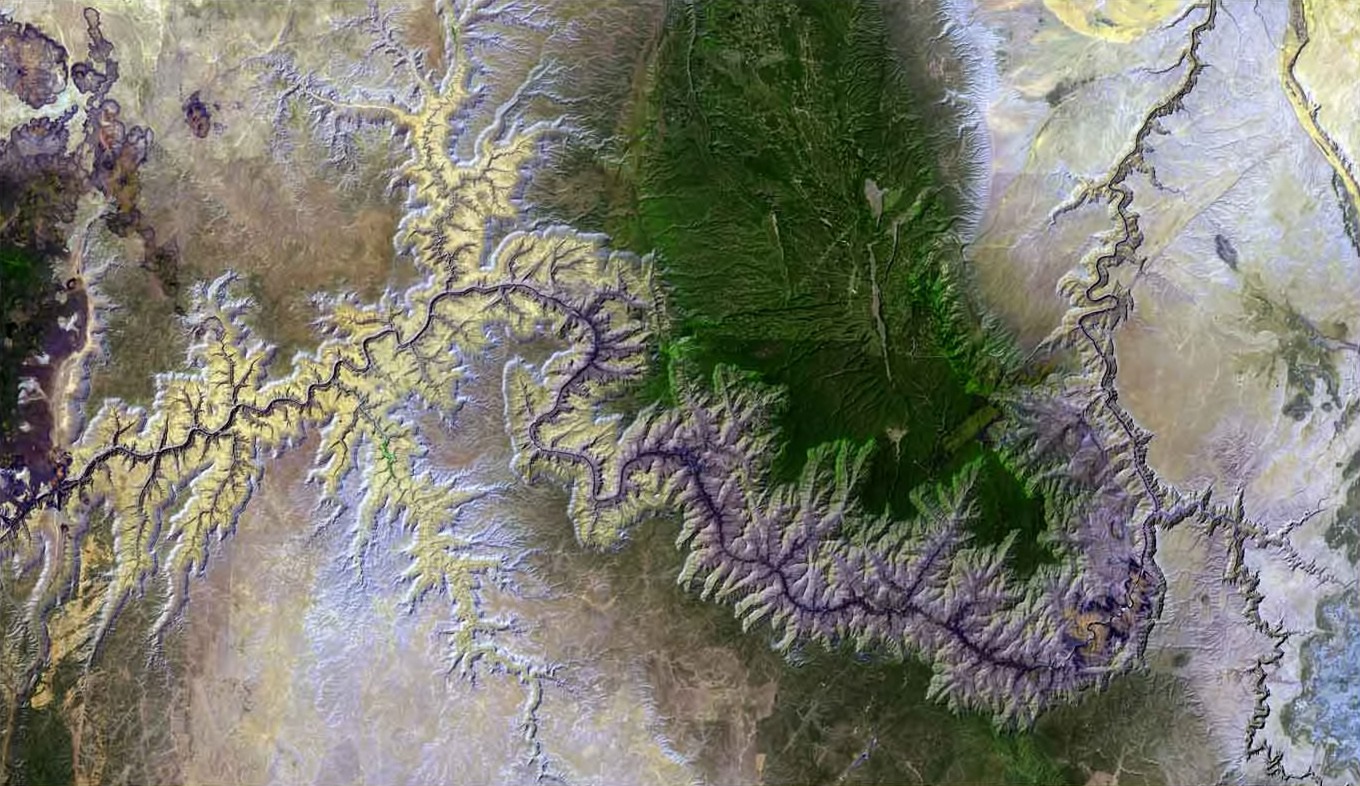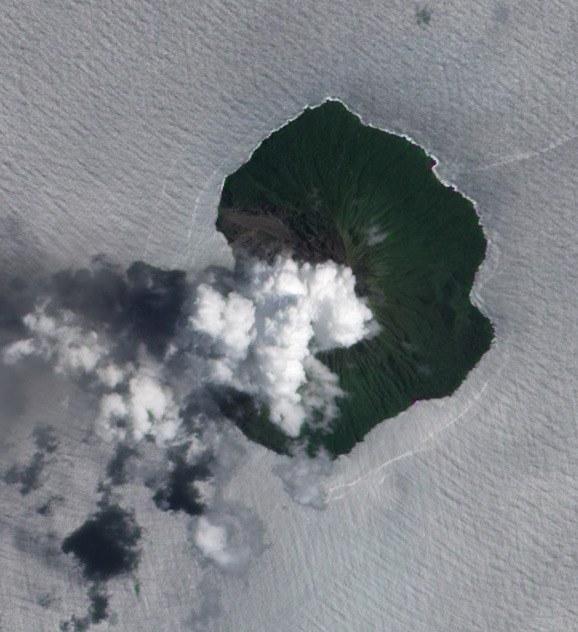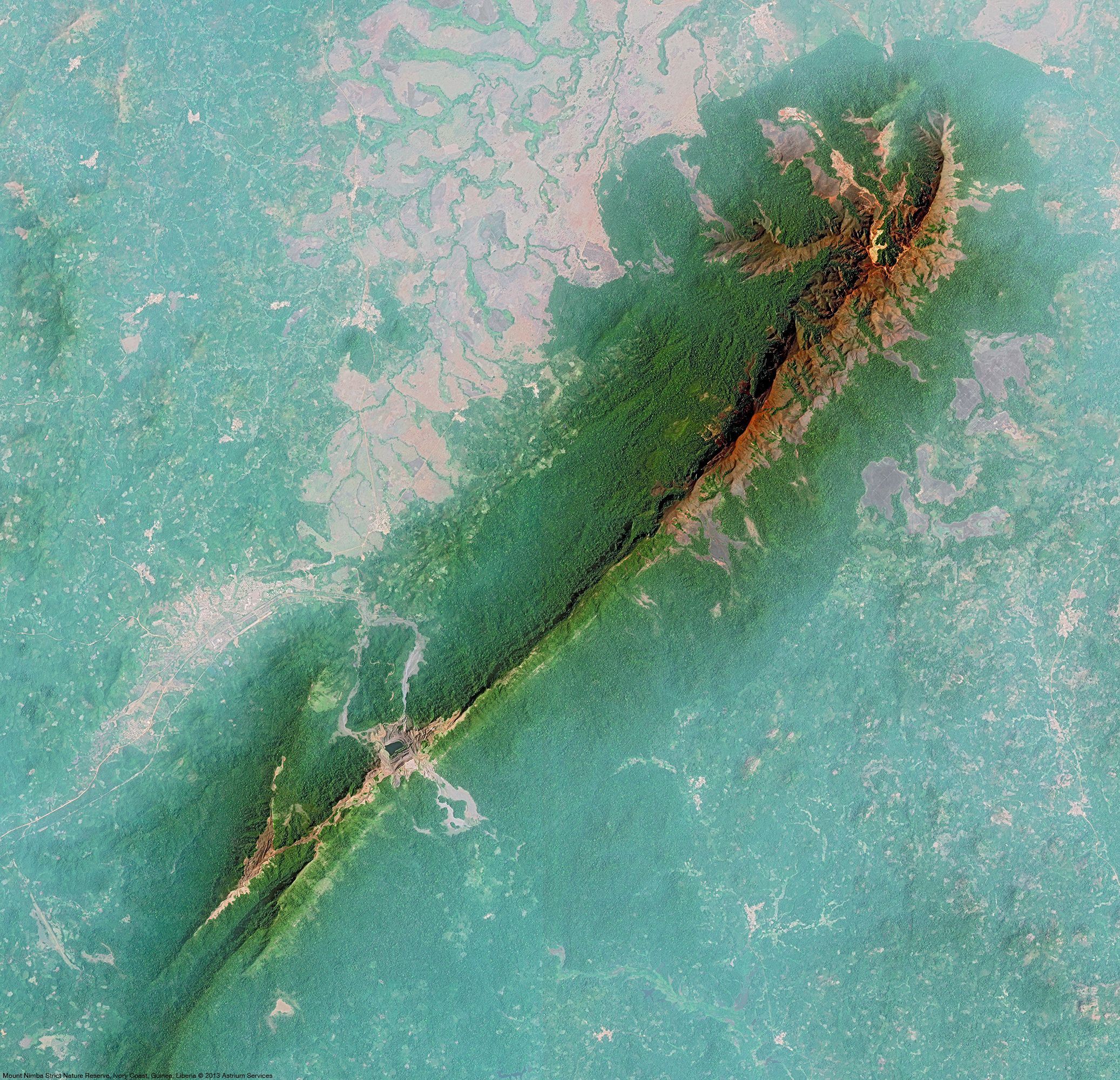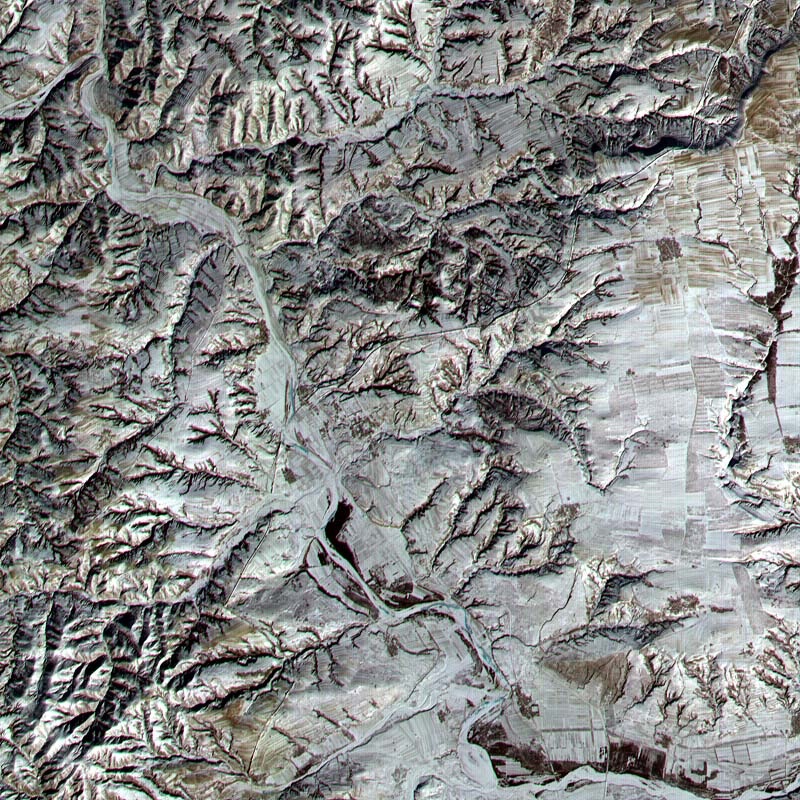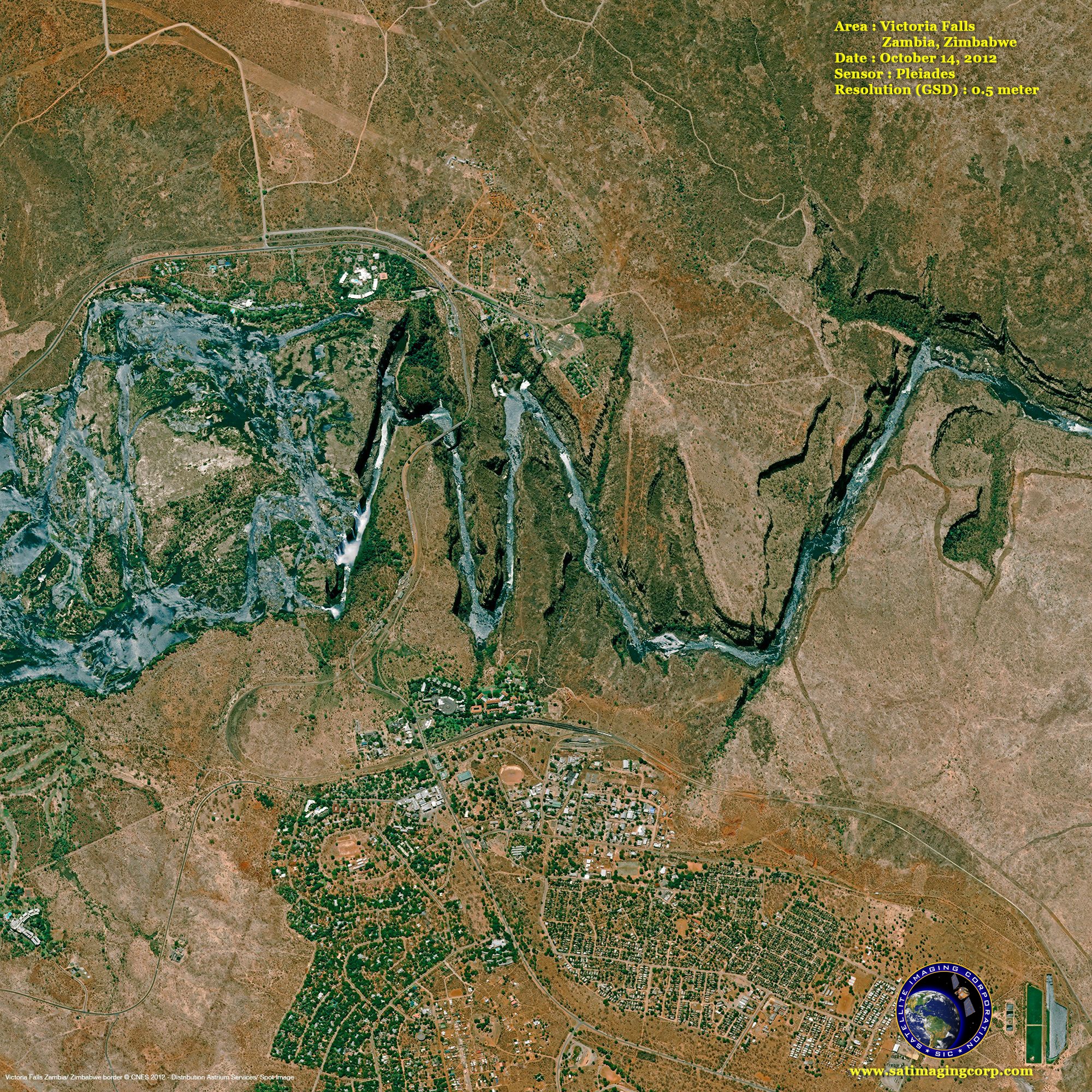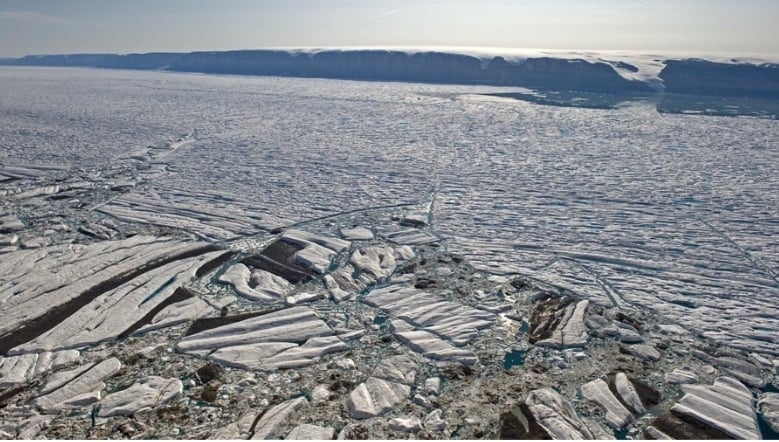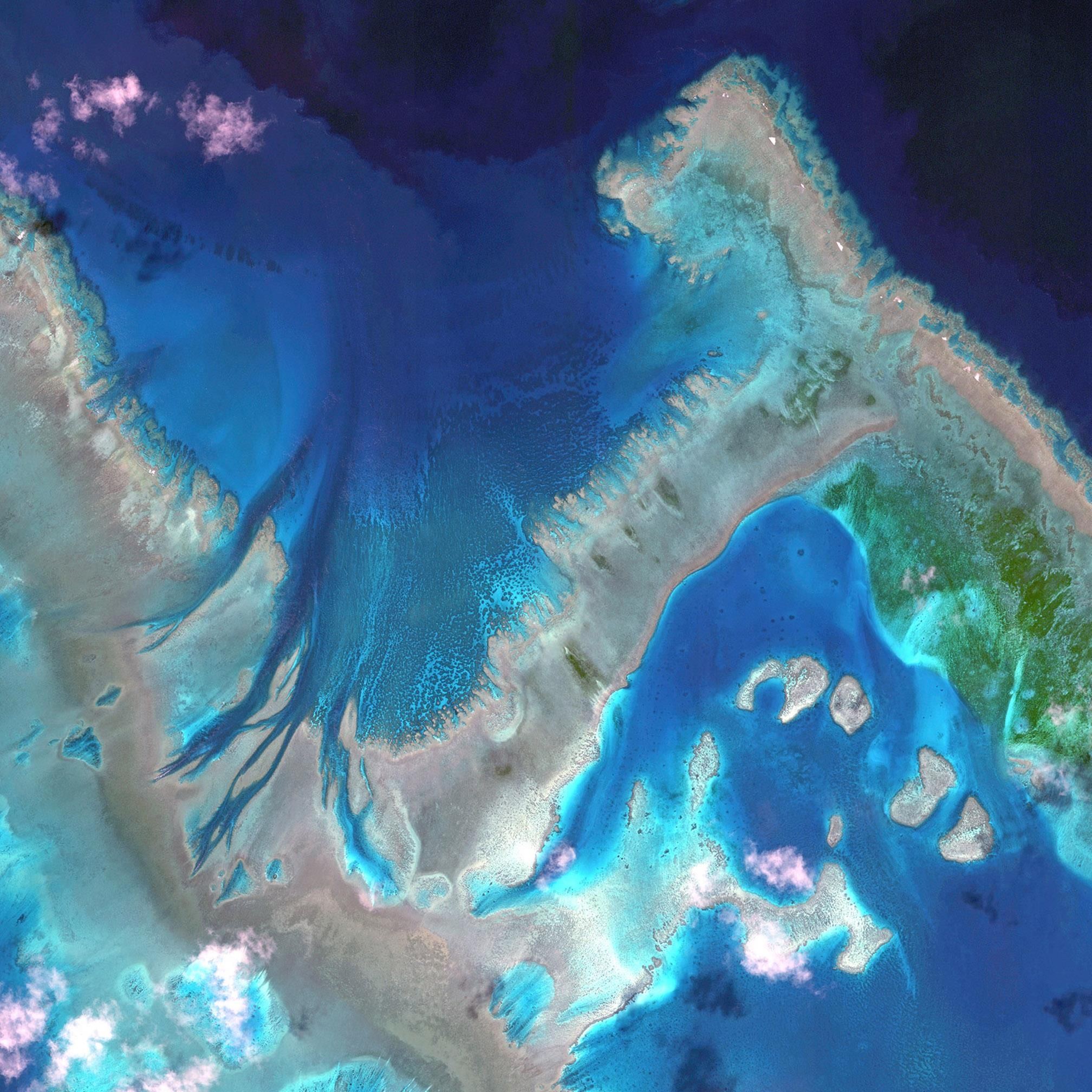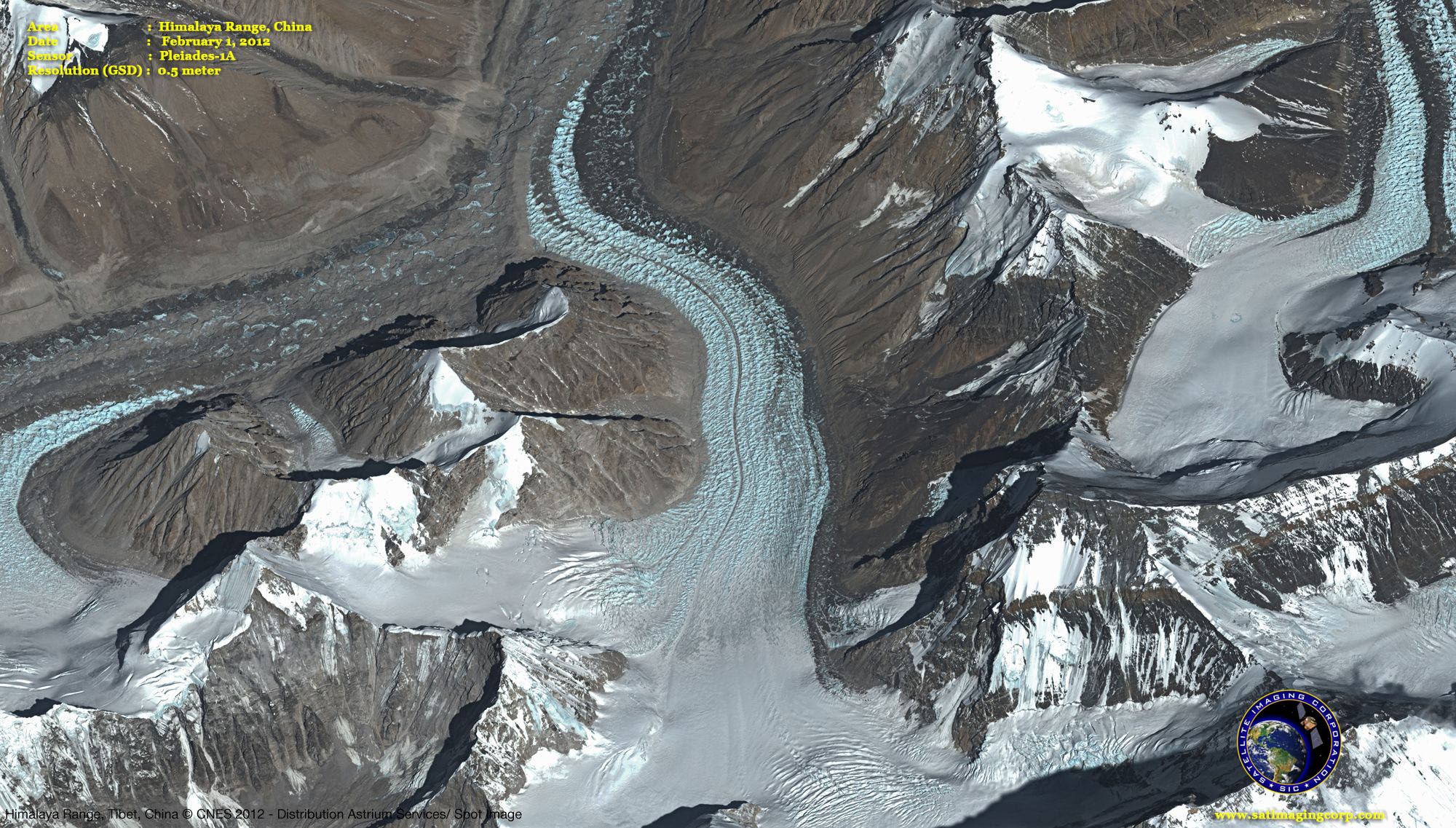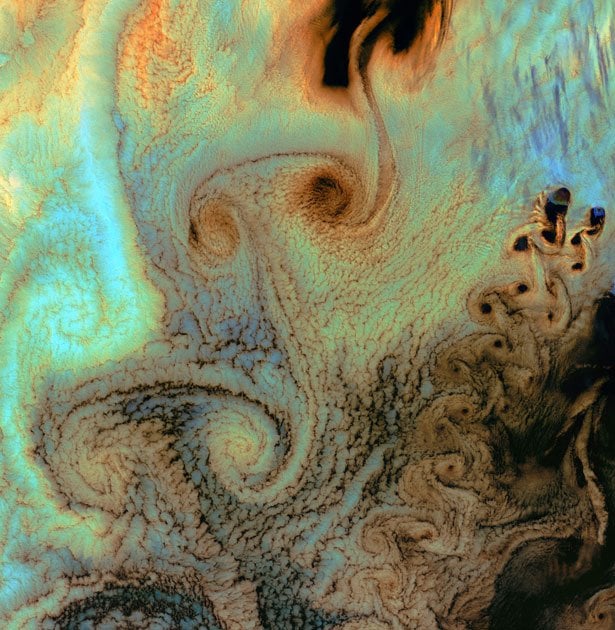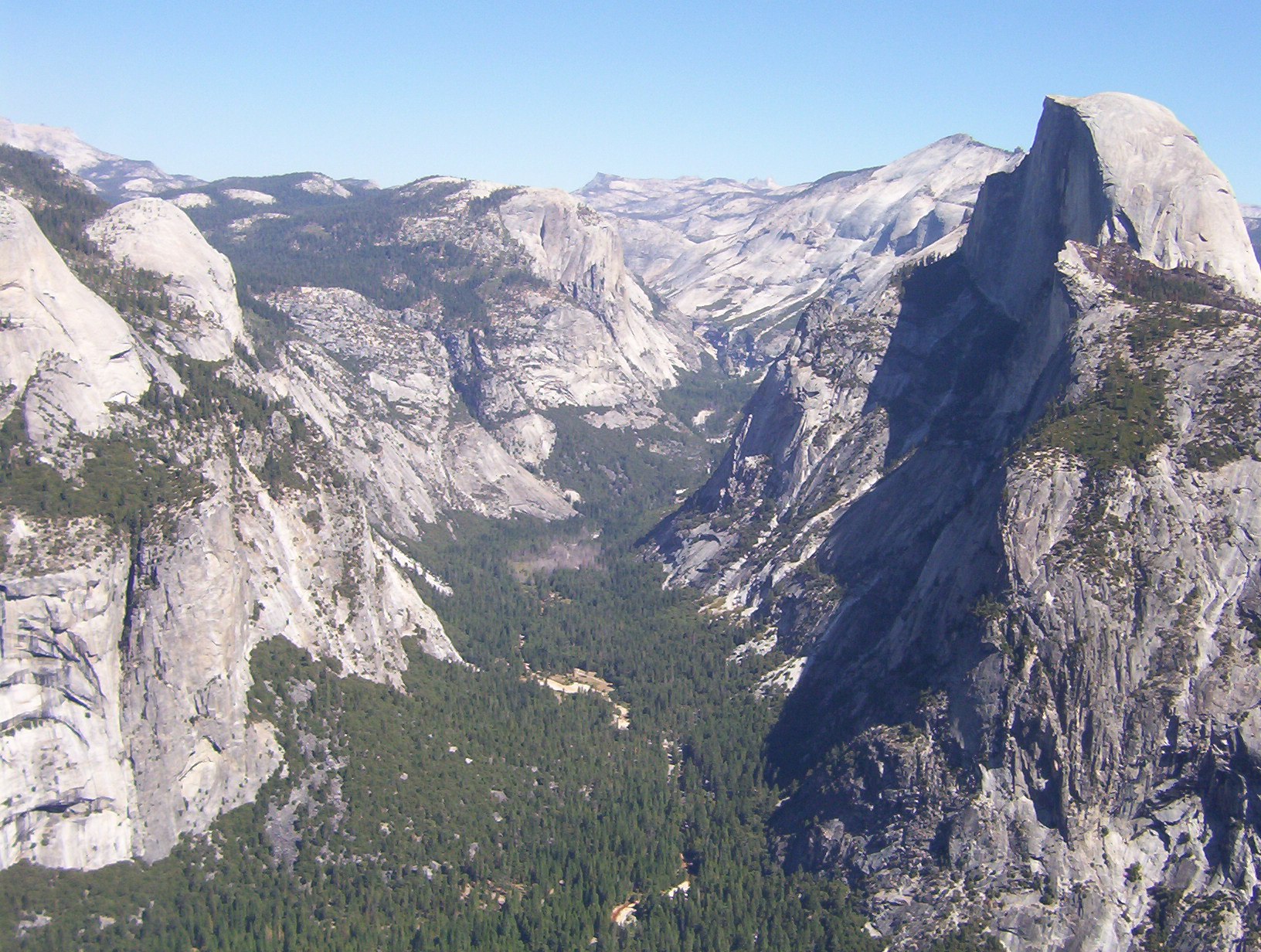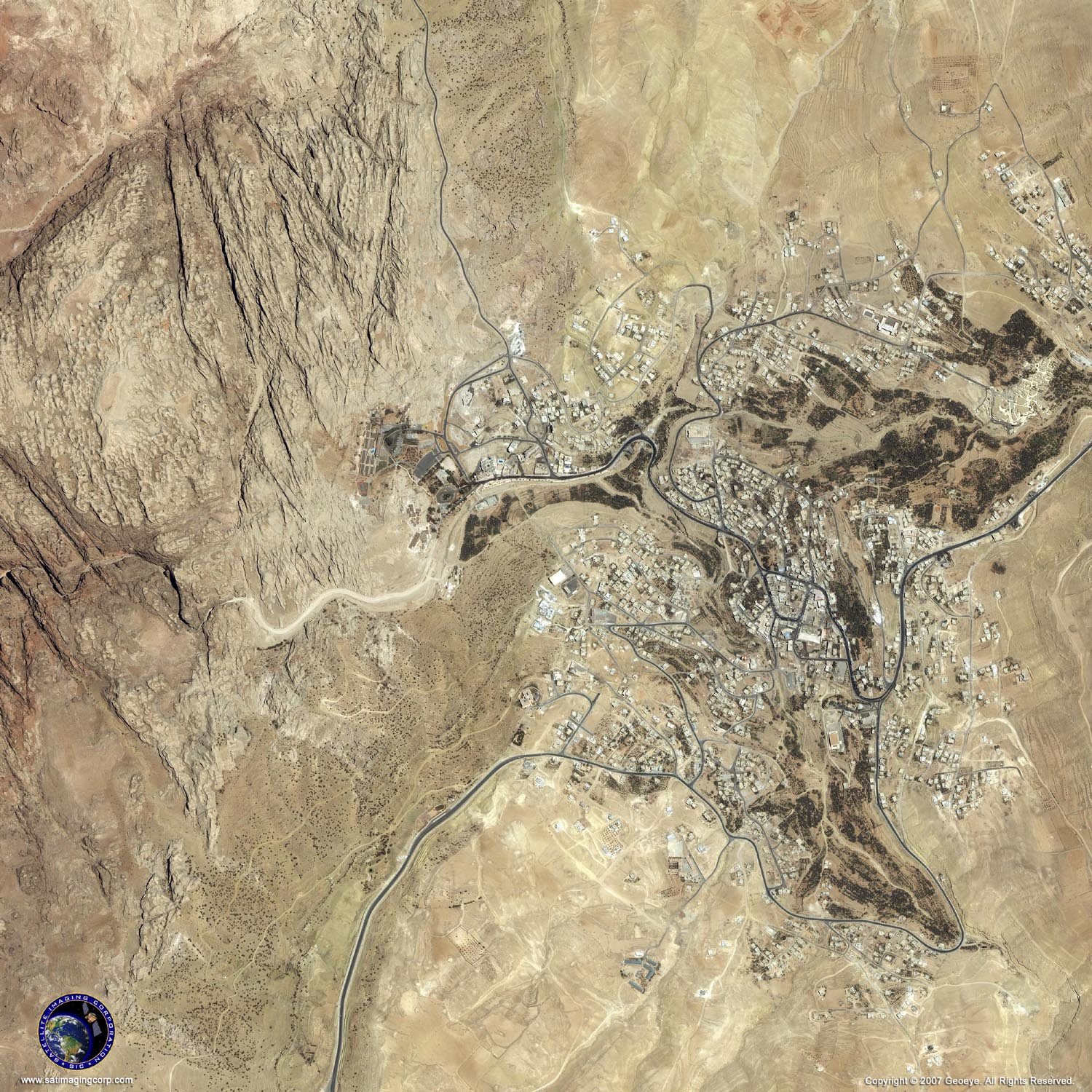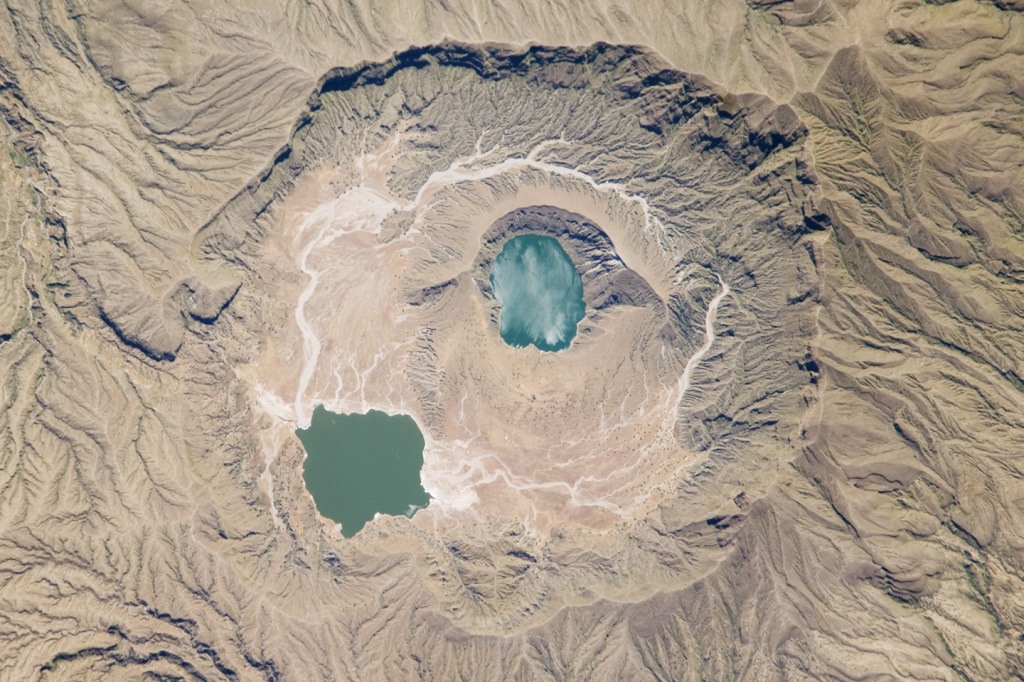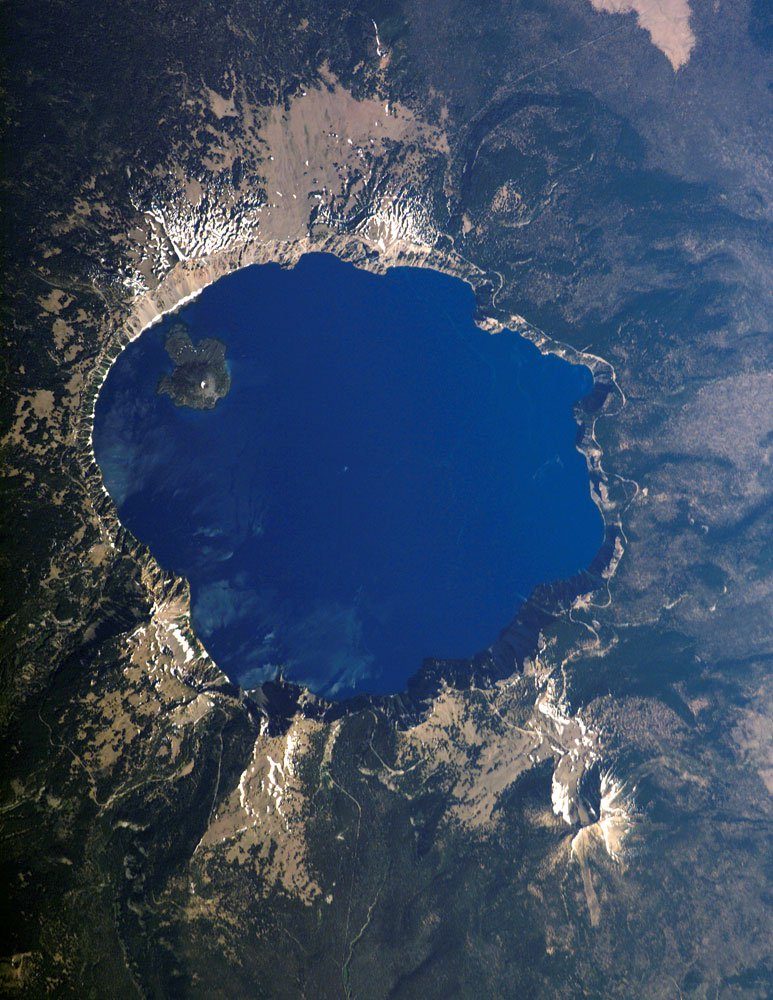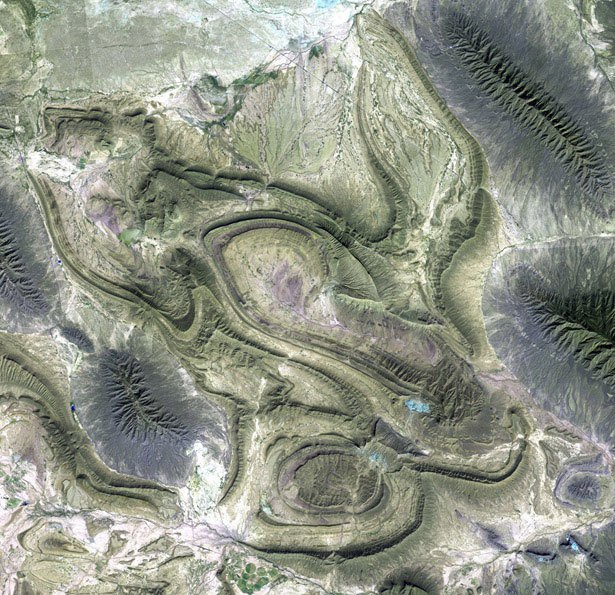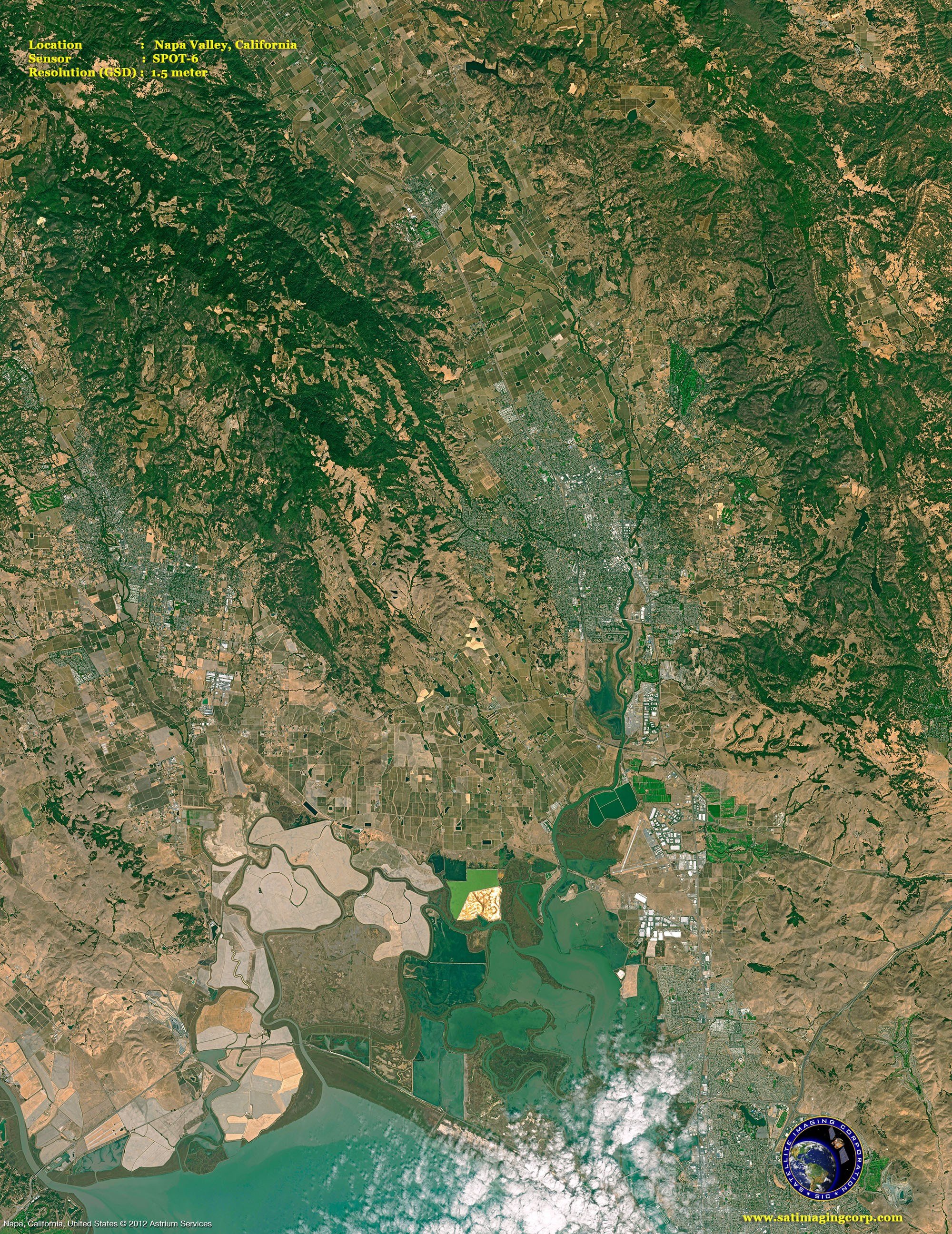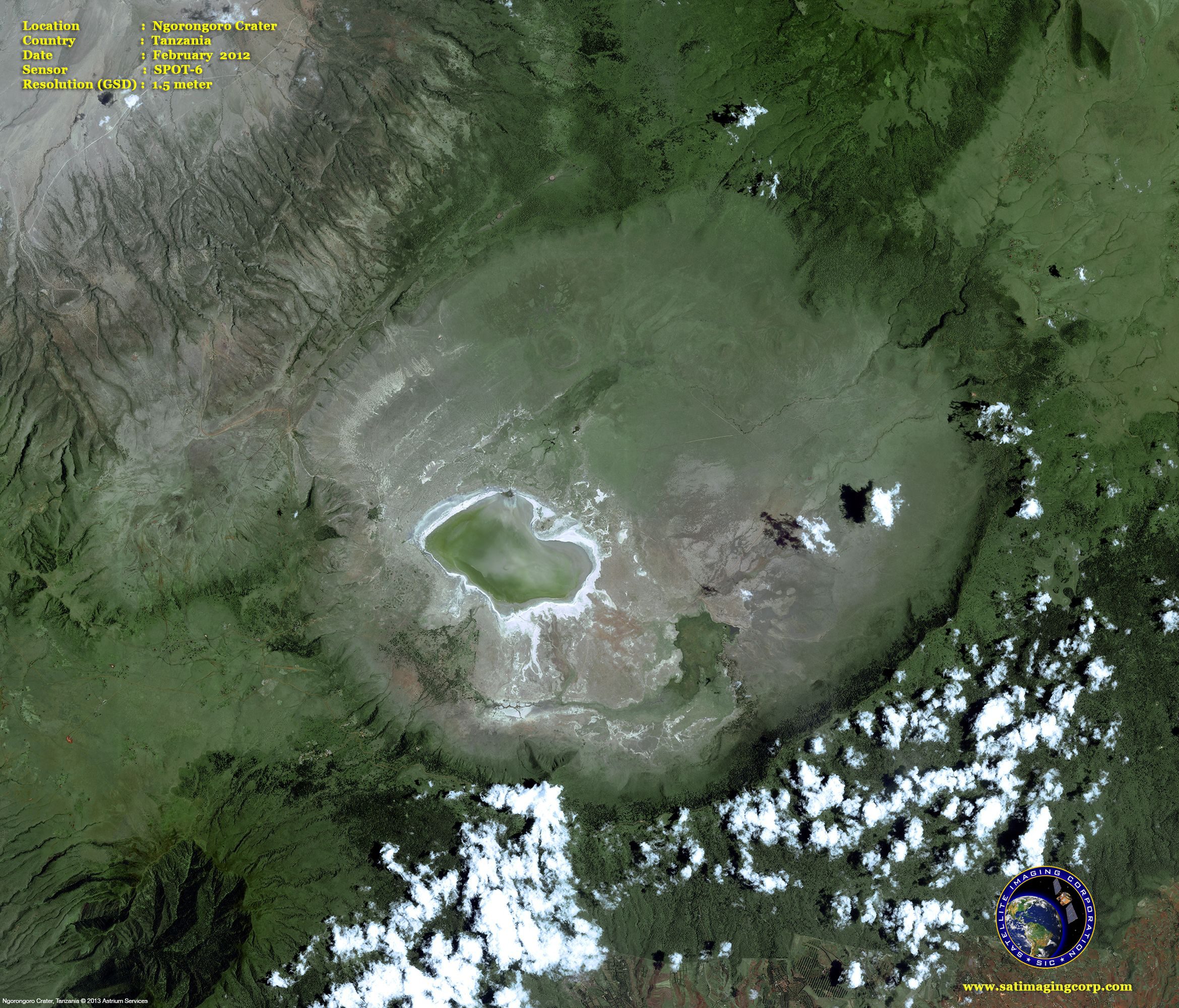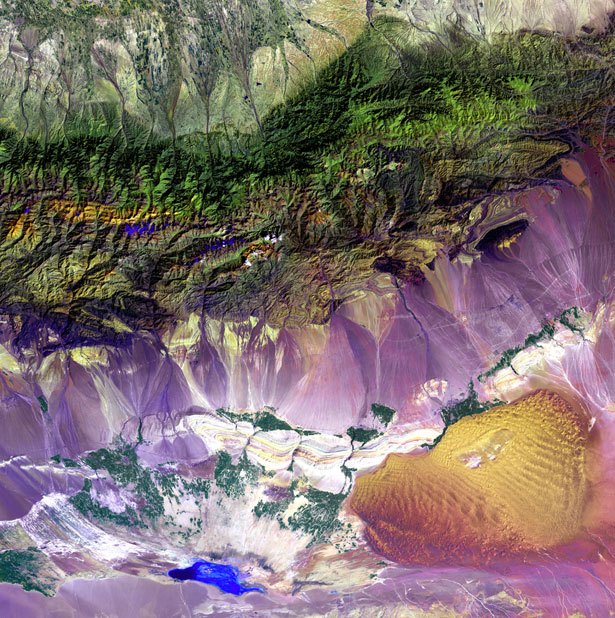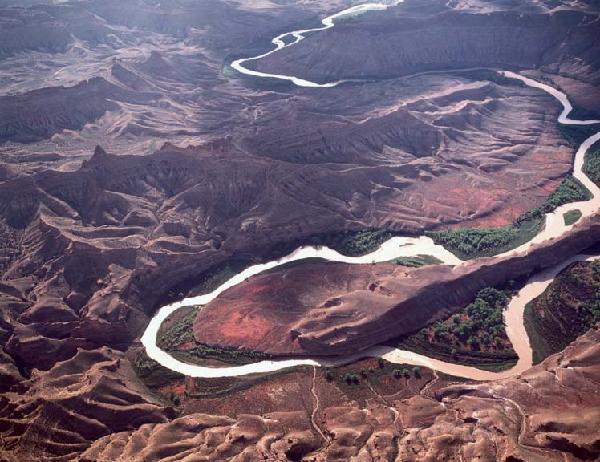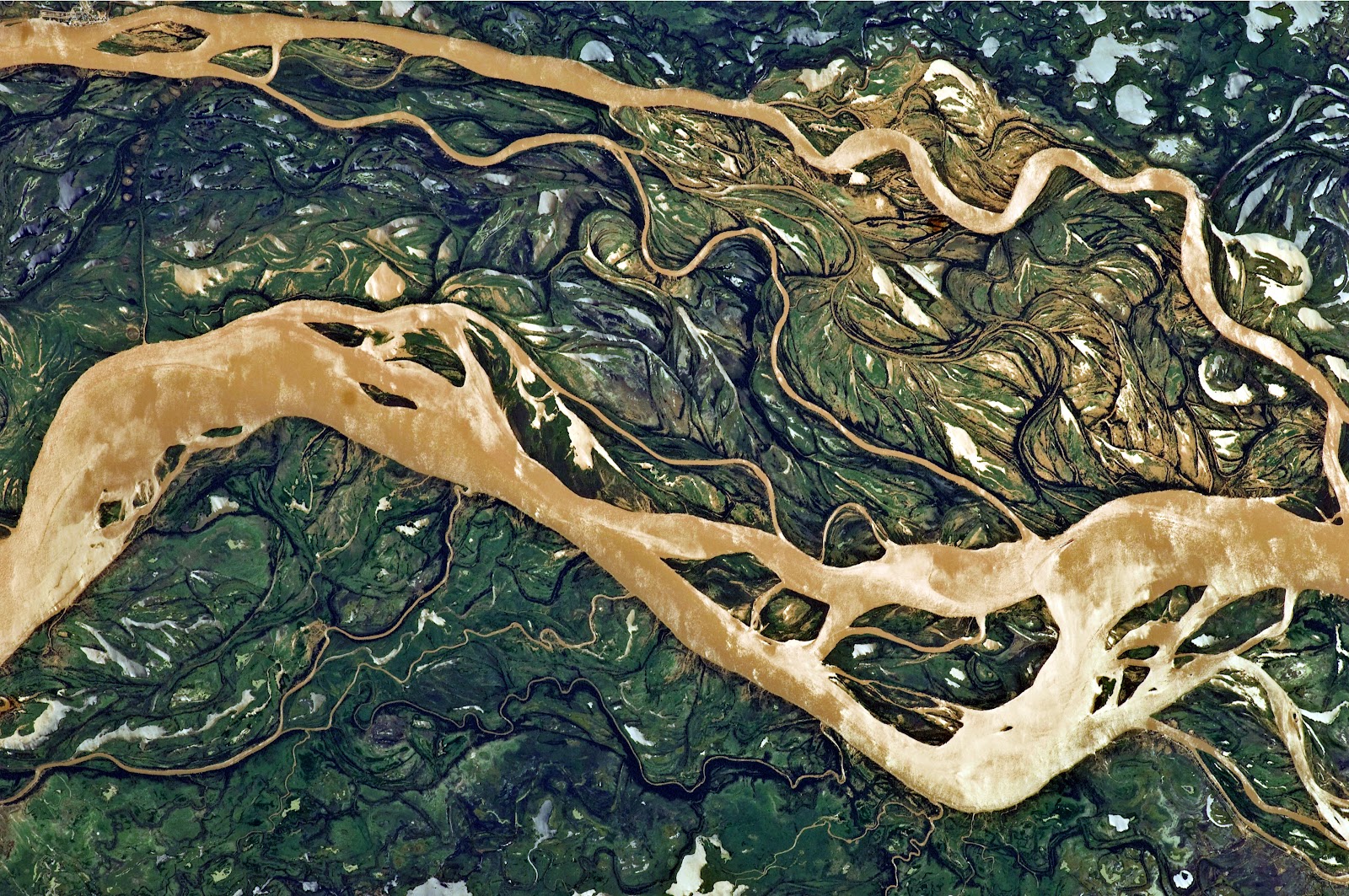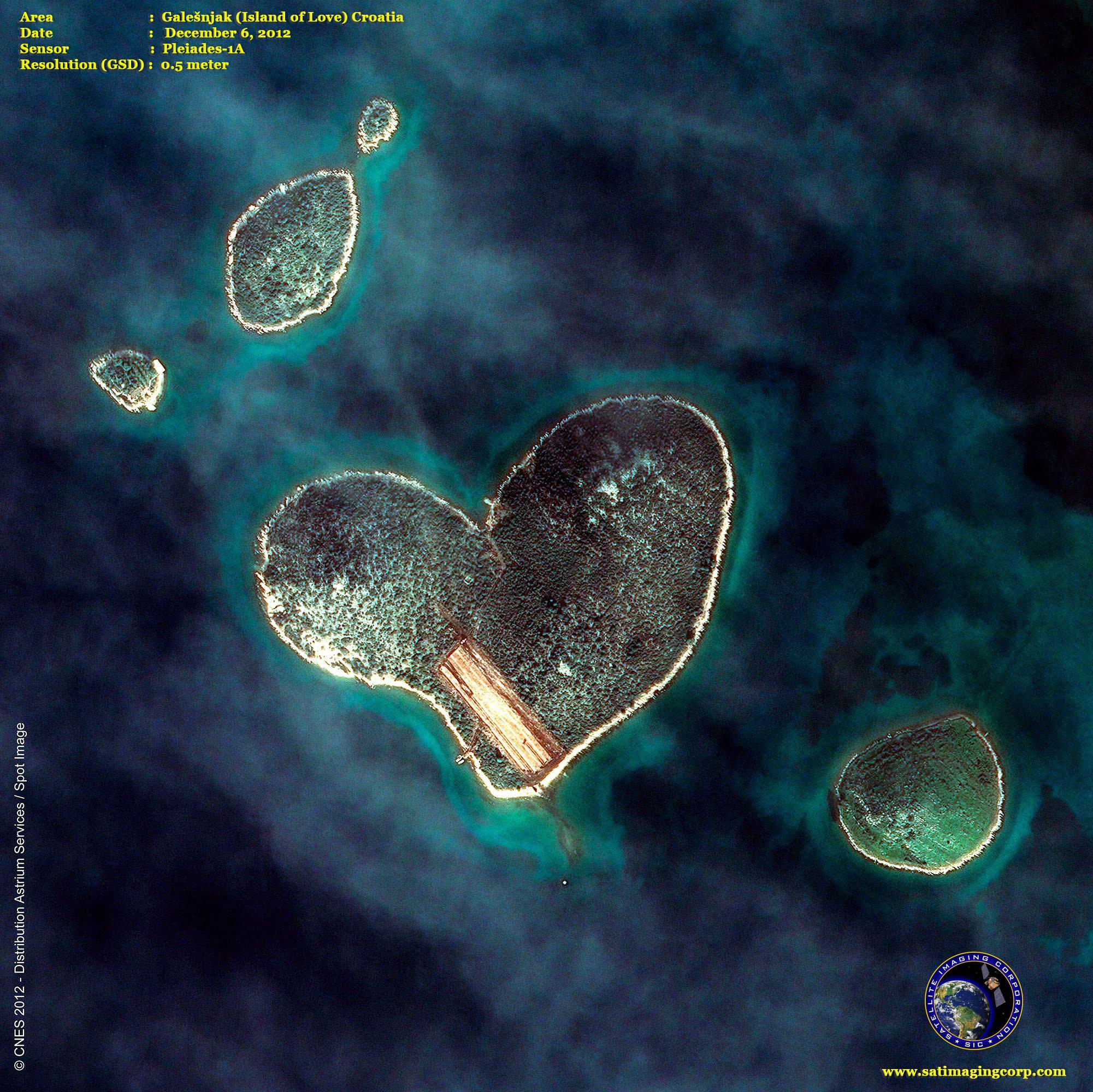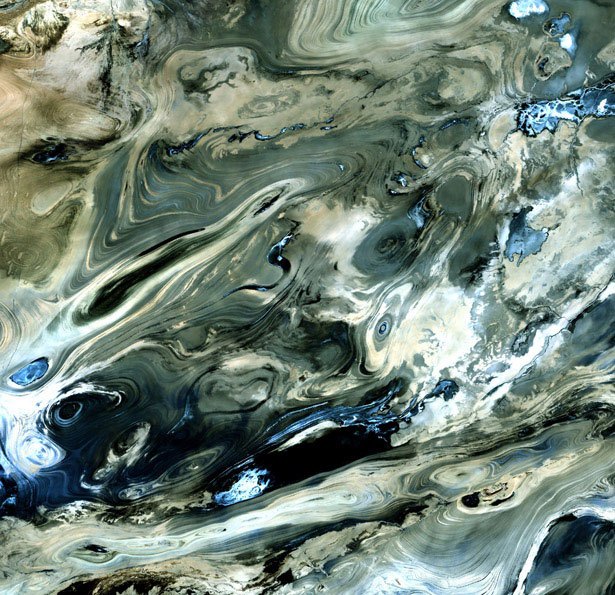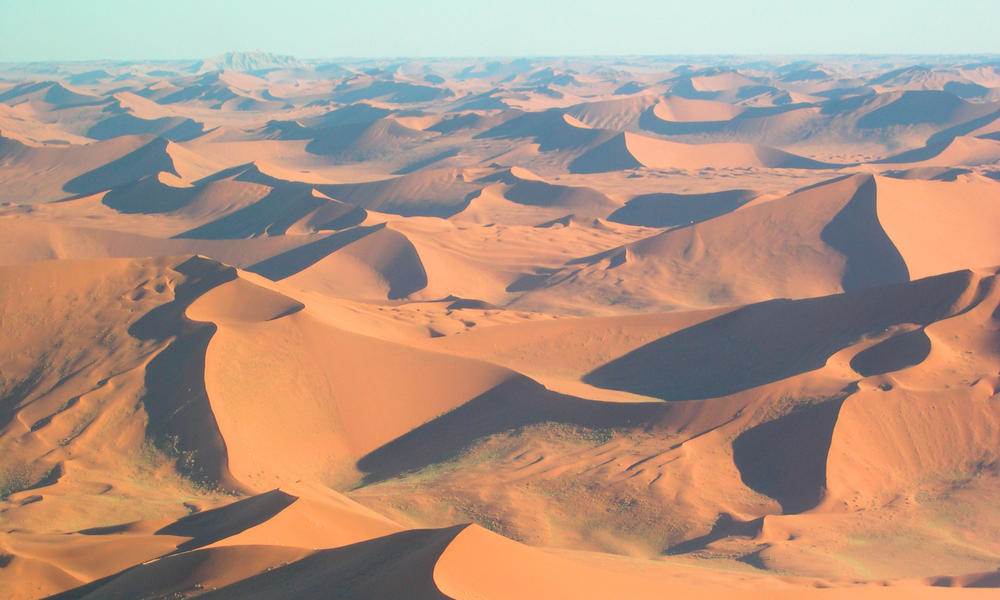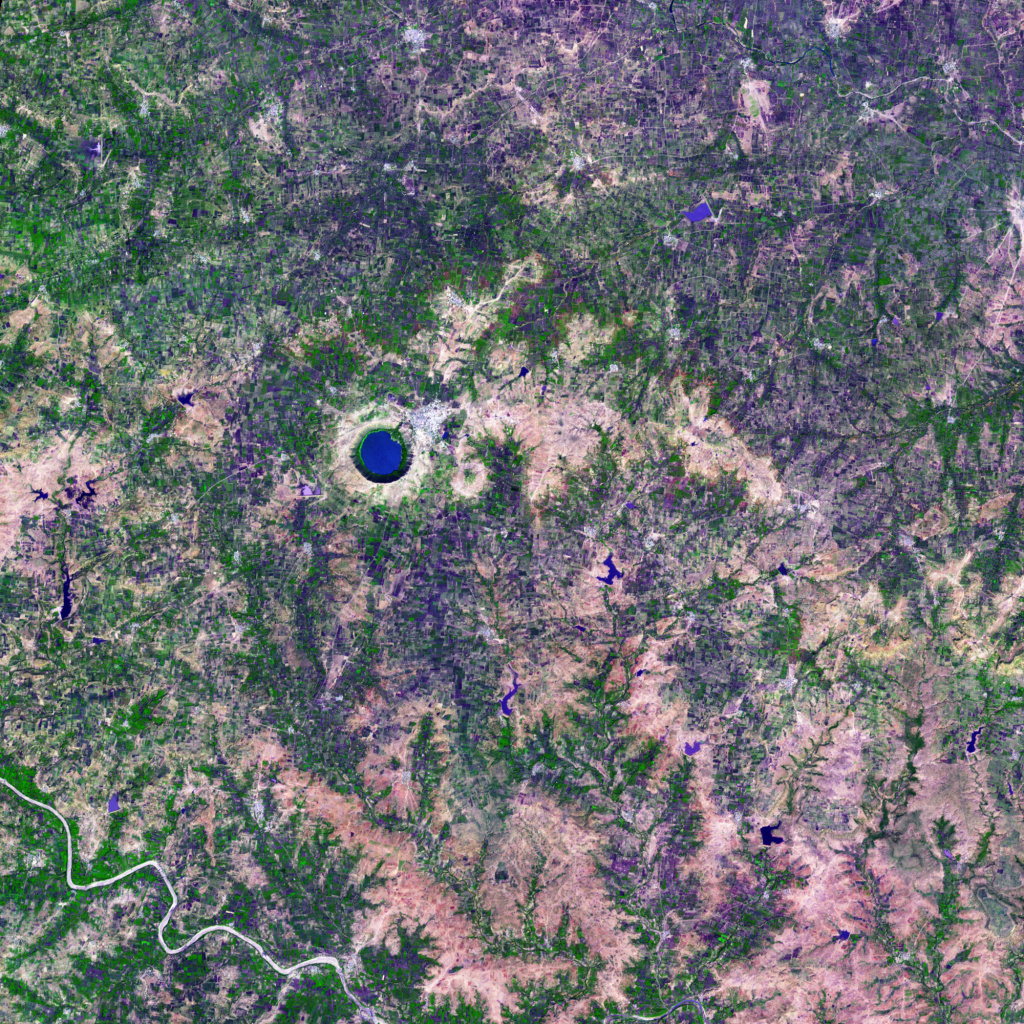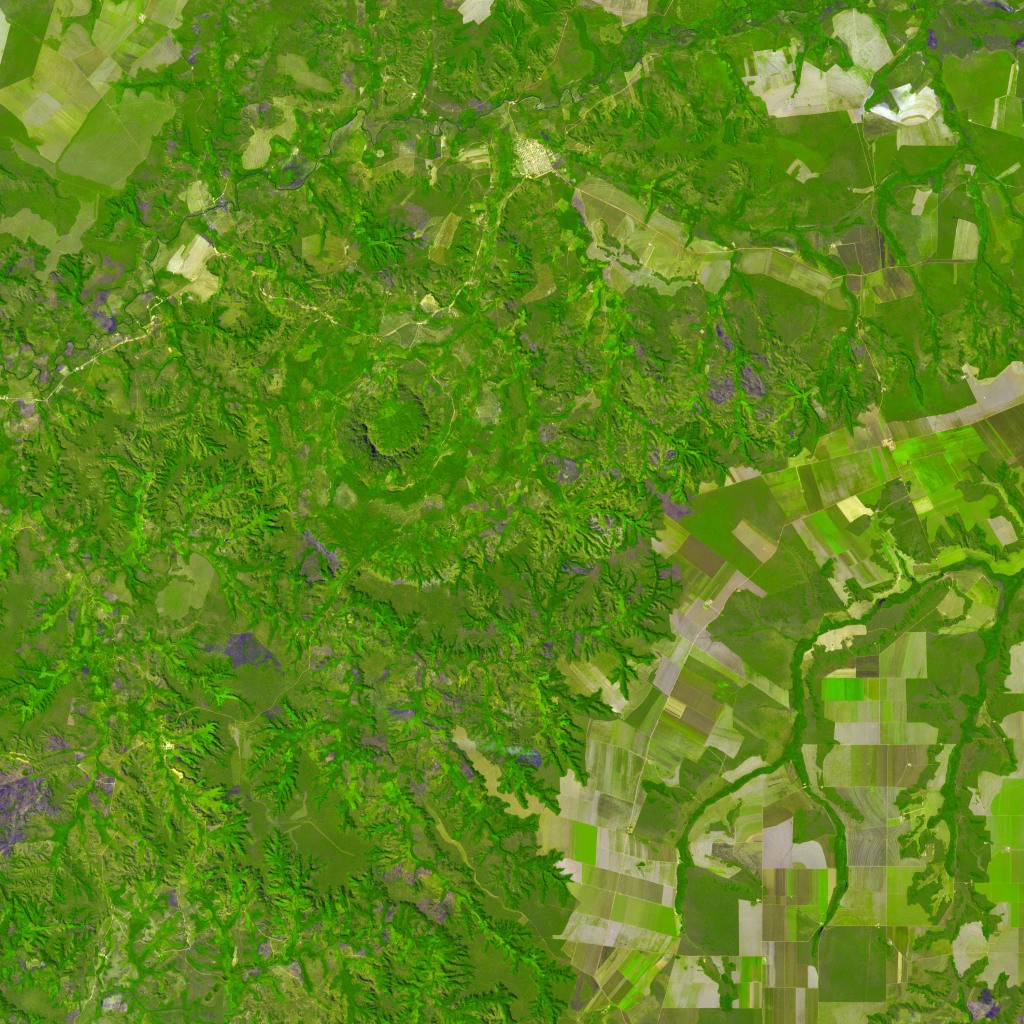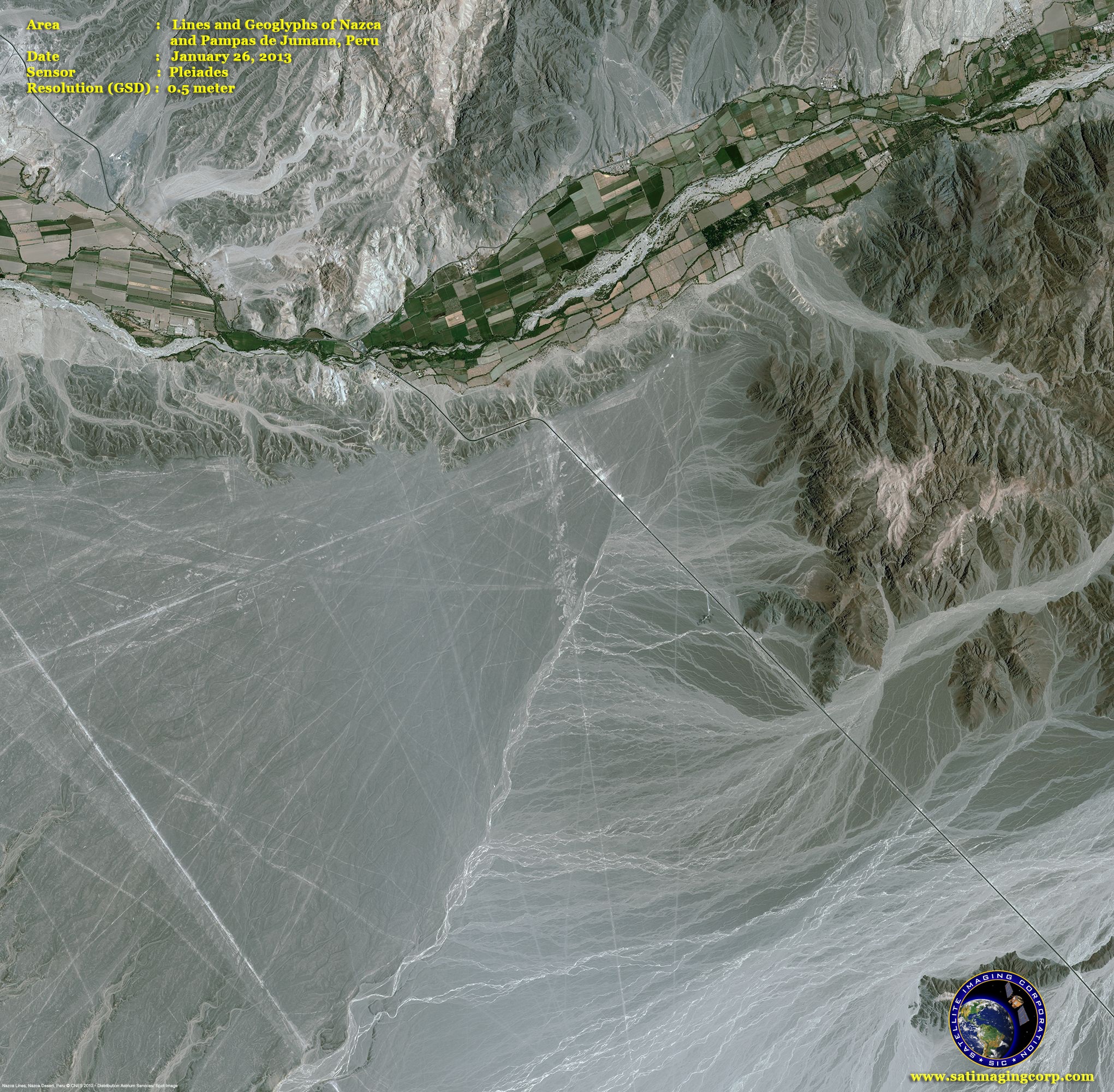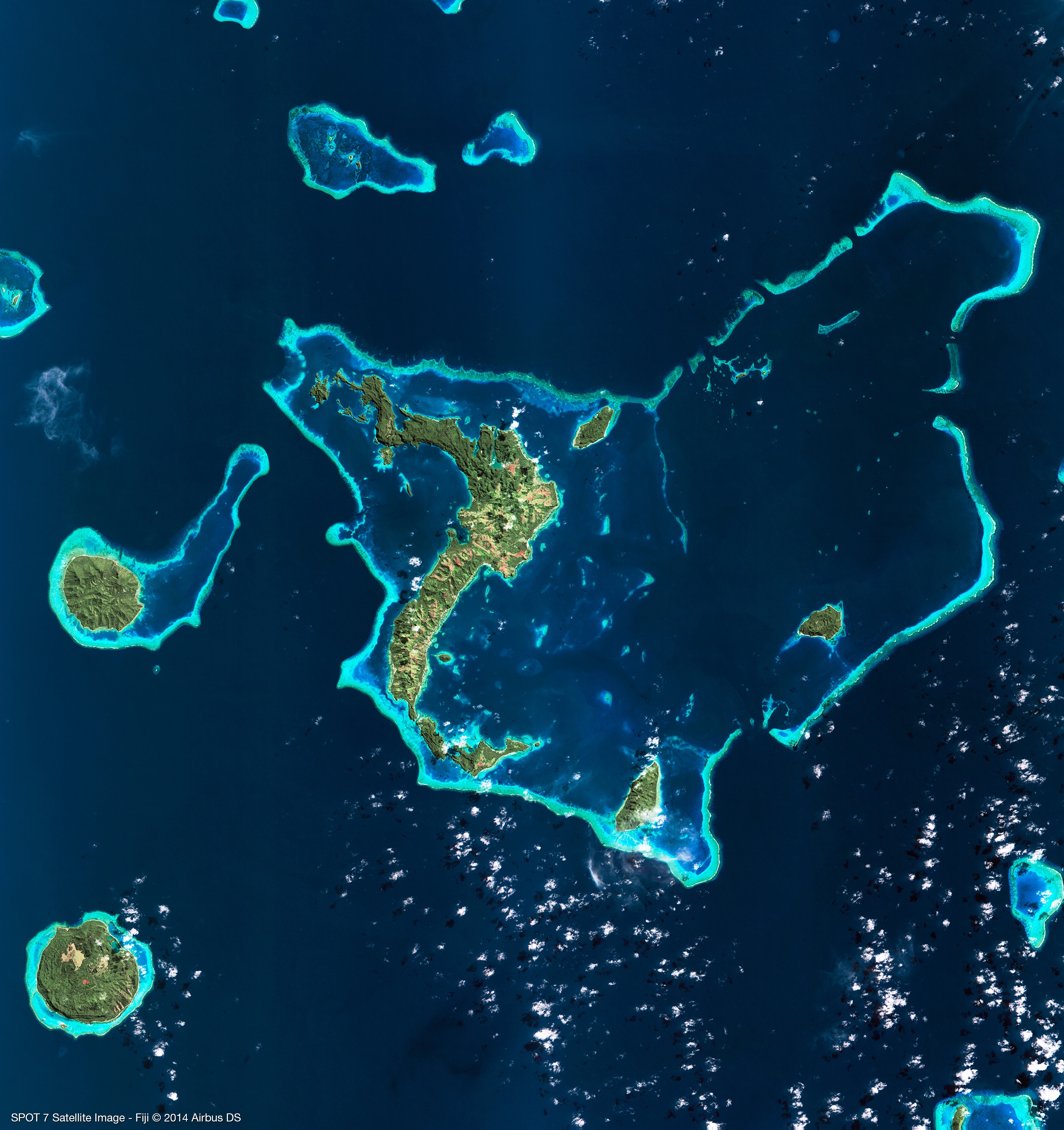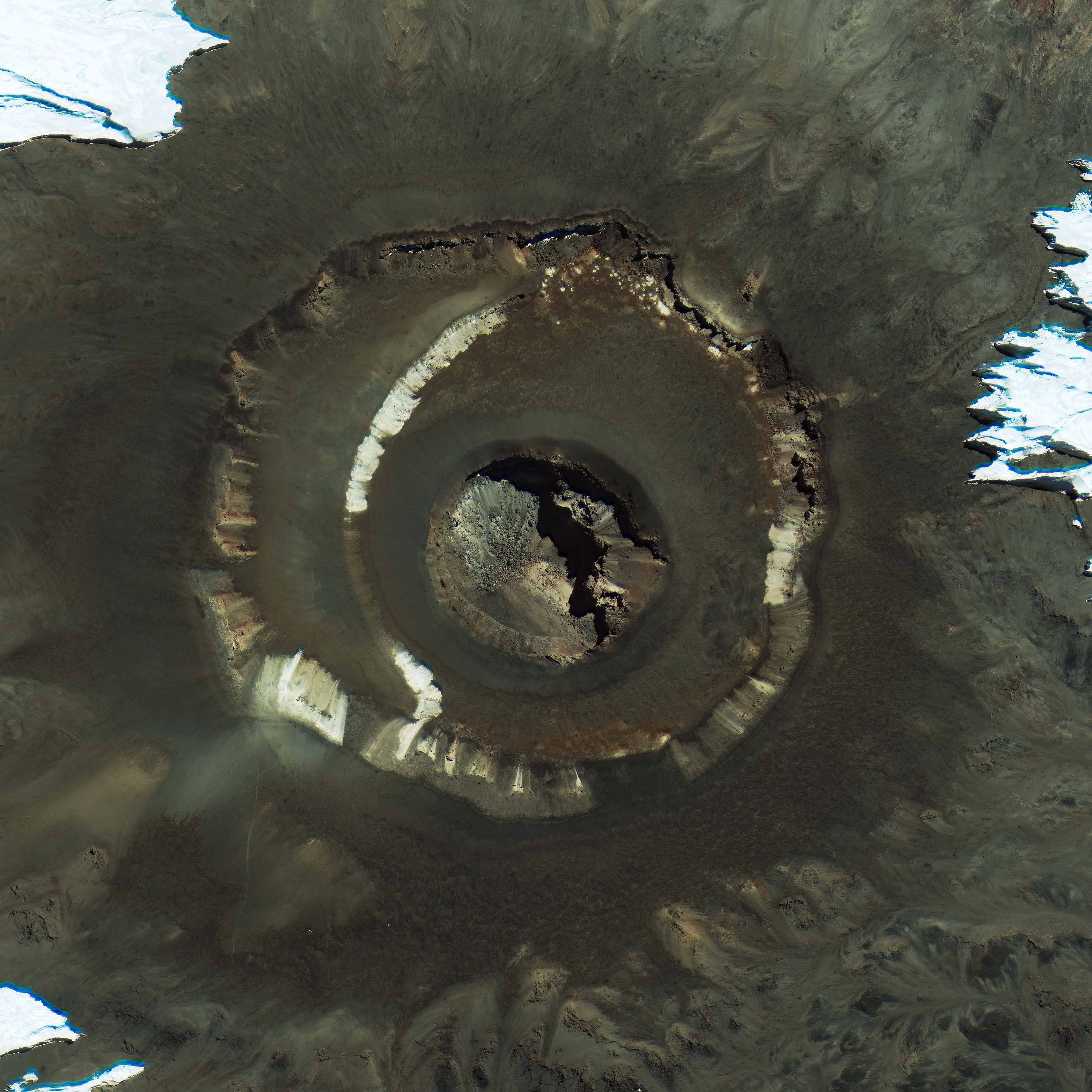From the Grand Canyon to the Great Barrier Reef, this list has some of the most amazing natural wonders on planet Earth. The views provide a unique perspective of the areas that we all love, but rarely get to see from above, and the results are amazing!
1. Lake Carnegie – Australia
Lake Carnegie is located in Western Australia and is 62 miles in length and 19 miles at its widest part. The only time it fills with water is during rare periods of heavy rainfall.
2. Grand Canyon National Park – USA
The steep sided canyon is next to the Colorado River and is 277 miles long and its widest area is 18 miles across. The most amazing factor is that its depth reaches deeper than a mile!
3. Tinakula – Solomon Islands
Tinakula is a stratovolcano that formed its own island. Its elevation is nearly 2,800 feet and it’s 2.2 miles wide. The island is currently uninhabited, since the last population during the 1840’s, experienced an eruption.
4. Mount Nimba – Guinea, Liberia and Côte d’Ivoire
The mountain is located on the border of Guinea, Liberia and Côte d’Ivoire. You can see the thick forest that covers the slopes of the mountain and at the foot there are grassy pastures.
5. Wadi Rum – Jordan
Commonly known as “The Valley of the Moon,” Wadi Rum is a valley that has been carved into sandstone and granite rock. The area was settled in 8,000 BC and covers an area of 280 square miles.
6. Victoria Falls – Zimbabwe
Victoria Falls is a massive waterfall at 355 feet with one only drop. The water flows from the Zambezi River. This is the worlds largest waterfall because it has one unbroken sheet of falling water with a width of 5,604 feet.
7. Petermann Glacier – Greenland
This glacier connects the Greenland ice sheet to the Arctic Ocean and is 43 miles long and 9.3 miles wide! Sadly, recent estimates suggest that it has lost 80% of its mass, which has become basal melt water.
8. Great Barrier Reef – Australia
The world’s largest coral reef system has over 2,900 individual reefs and 900 islands coming to a total of 1,400 miles. This is the biggest structure ever created by living organisms.
9. The Himalayas – China, Nepal
Towering at 29,029 feet, the Himalayan range has the world’s highest peaks, its highest being Mount Everest. The mountain range extends a staggering 1,500 miles and has over one hundred mountains.
10. Von Karman Vortices
This natural phenomenon pictured above, is caused by repeating patterns of swirling vortices, due to the flowing of fluids around objects. It’s common around mountain ranges and can only be witnessed from above.
11. Yosemite National Park – USA
The United States park spans nearly 748,000 acres in the central eastern portion of the state of California. Yosemite reaches across the Sierra Nevada mountain chain and has 3.7 million visitors every year.
12. Petra – Jordan
A history rich city, filled with many archaeological endeavors, has natural beauty as well. The area is elevated at 2,657 feet and is believed to be first built on in the fifth century BCE.
13. Deriba Caldera Crater – Sudan
The Deriba Crater is located in Darfur, which is the western part of Sudan. It is nearly 10,000 feet at its highest point and between 5 km and 8 km in diameter across the outer crater. The depression was caused by rock and soil collapsing into a magma chamber.
14. Crater Lake – Oregon
The caldera lake is located in the western United States and is famous for its water clarity and rich blue color. There are two islands in the lake which are called “Wizard Islands” and “Phantom Ship.”
15. Coahuila – Mexico
The beautifully shaped and barren area is part of the Sierra Madre Oriental mountain range. It borders the Coahuila and Nuevo Leon provinces of Mexico.
16. Napa Valley – USA
While the wine may be exquisite, so is the landscape! The valley is next to the Mayacamas Mountain Range on the western and northern sides and is next to the Vaca Mountain on the east.
17. Ngorongoro Crater – Tanzania
The site is a UNESCO World Heritage site and is a large volcanic caldera. The area is around 3,200 square miles and has been a home to various species for the past 3 million years.
18. Maldives – Republic of the Maldives
Located in the Indian Ocean and the Arabian Sea, there are 26 atolls that make up two different chains of islands.The Maldivians gained their independence from the United Kingdom in 1965.
19. Bogda Mountains – China
The highest mountain of the Bogda Shan mountain range, it reaches 17,864 feet at its highest point. The sides slope between 70 and 80 degrees making it a very difficult mountain to climb.
20. Gosses Bluff – Australia
The Gosses Bluff Crater is the result of an impact crater, but much of the original impact has eroded away over time. The crater is thought to be formed around the Jurassic – Cretaceous periods.
21. Desolation Canyon USA
Located in the the state of Utah, it is a remote canyon on the Green River. The canyon goes as far down as 5,000 feet at its deepest point and was declared a national historic landmark in 1968.
22. Parana River Delta – Argentina
The Parana Delta is 200 miles in length is is divided into three parts which are the Upper Delta, the Middle Delta, and the Lower Delta. it’s width varies between 11 miles and 37 miles.
23. Galešnjak
More commonly known as the “Island of Love,” it is one of the few naturally occuring heart-shapes objects on earth. It is located in the Adriatic, between the islands of Pasman and the town of Turanj.
24. Konari – Iran
The small town of Konari is a part of the Zagros Mountains, located in western Iran. The town also has the Mand River running around it.
25. Namib Desert – Southern Africa
Namib is a coastal desert in sourthern Africa. It is more than 1,200 miles long and 124 miles wide. It is home to the Brandberg Mountain which is 8,550 feet tall.
26. Lonar Crater Lake – India
The giant crater lake was created by a meteor impact during the Pleistocene Epoch. The average depth of the lake is around 450 feet and has a diameter of 5,900 feet!
27. Serra Da Cangalha Crater – Brazil
Another impact crater, this one is in the state of Tocantins in northeastern Brazil. This is the second largest known crater in Brazil and is estimated to be around 220 million years old.
28. Nazca Desert – Peru
Located in southern Peru, the Nazca Desert is most known for ancient geoglyphs that were created between 400 and 650 AD on a plateau that stretches more than 50 miles in length.
29. Fiji Islands – Fiji
The islands are located in the South Pacific Ocean and are in an area of over 7,000 square miles. There are more than 330 islands and the majority of them were formed from volcanic activity, beginning around 150 million years ago.
30. Kilimanjaro – Tanzania
Mount Kilimanjaro has three volcanic cones and is now a dormant mountain in Tanzania. Its highest peak reaches 19,341 feet and it is the highest mountain in Africa. It’s also the highest free-standing mountain in the world.
Featured photo credit: B Rosen via flickr.com


